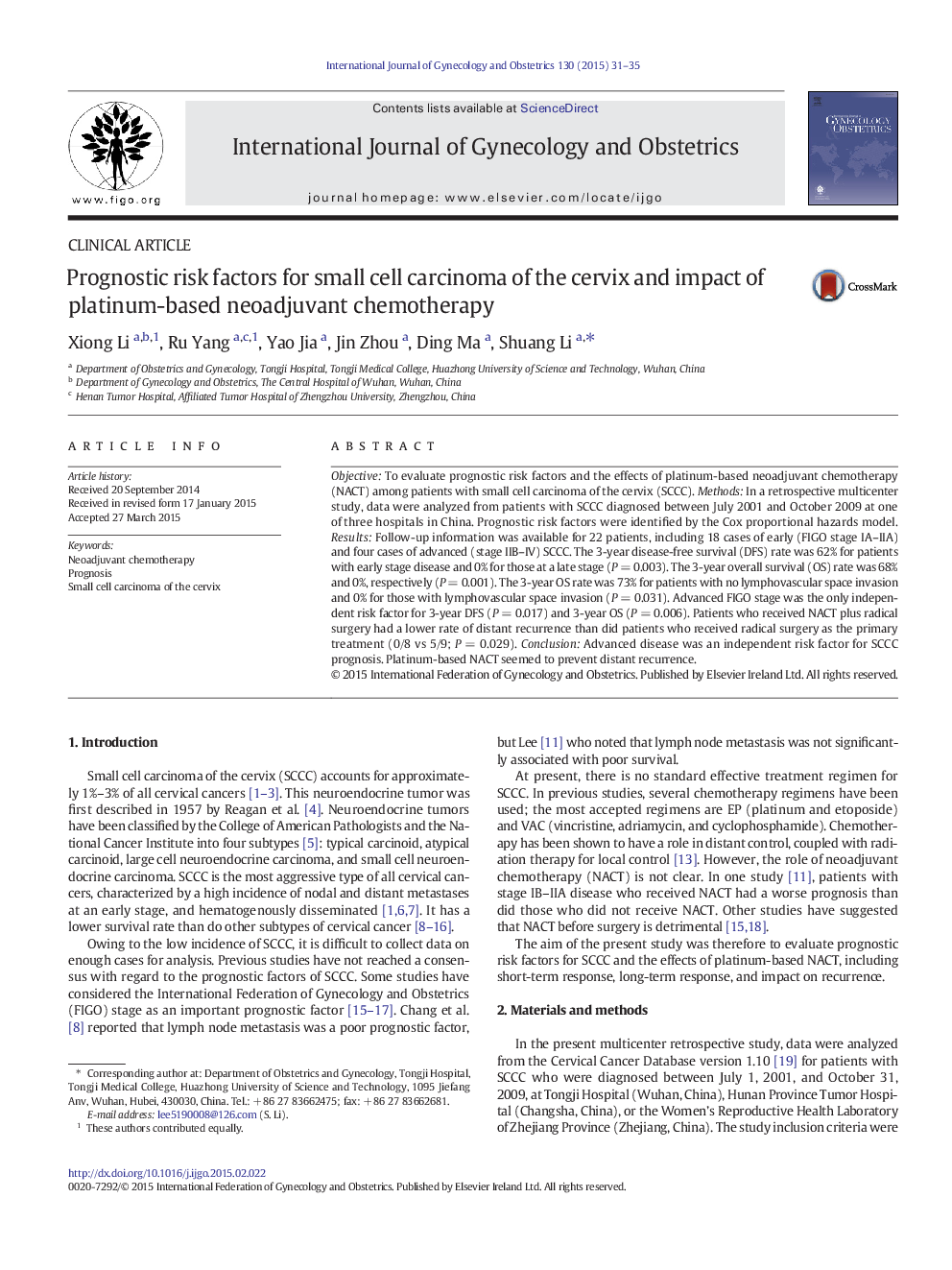| Article ID | Journal | Published Year | Pages | File Type |
|---|---|---|---|---|
| 3954140 | International Journal of Gynecology & Obstetrics | 2015 | 5 Pages |
ObjectiveTo evaluate prognostic risk factors and the effects of platinum-based neoadjuvant chemotherapy (NACT) among patients with small cell carcinoma of the cervix (SCCC).MethodsIn a retrospective multicenter study, data were analyzed from patients with SCCC diagnosed between July 2001 and October 2009 at one of three hospitals in China. Prognostic risk factors were identified by the Cox proportional hazards model.ResultsFollow-up information was available for 22 patients, including 18 cases of early (FIGO stage IA–IIA) and four cases of advanced (stage IIB–IV) SCCC. The 3-year disease-free survival (DFS) rate was 62% for patients with early stage disease and 0% for those at a late stage (P = 0.003). The 3-year overall survival (OS) rate was 68% and 0%, respectively (P = 0.001). The 3-year OS rate was 73% for patients with no lymphovascular space invasion and 0% for those with lymphovascular space invasion (P = 0.031). Advanced FIGO stage was the only independent risk factor for 3-year DFS (P = 0.017) and 3-year OS (P = 0.006). Patients who received NACT plus radical surgery had a lower rate of distant recurrence than did patients who received radical surgery as the primary treatment (0/8 vs 5/9; P = 0.029).ConclusionAdvanced disease was an independent risk factor for SCCC prognosis. Platinum-based NACT seemed to prevent distant recurrence.
